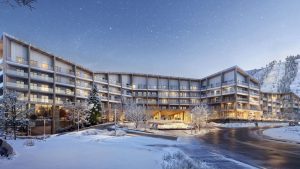The green building sector in Canada may be getting increasingly sophisticated but that doesn’t necessarily mean all projects are successful in reaching sustainability goals, delegates attending a forum in Hamilton learned last month.
Discussing one Mississauga project, the Sheridan College Hazel McCallion Campus Phase 2 project, during the morning session of the June 13 event, Sheridan project manager Katherine Rinas praised the work of the designers but said documented energy use two years after the project wrapped up has proved to be way off original targets, mainly because of a leaky building envelope.
The target for energy consumption was 180 kwh/m2/year, Rinas said, but the building currently operates at 148. This, despite intense efforts to optimize the mechanical, electrical and other systems, she said.
“So we started looking elsewhere,” Rinas recounted. “We really put a focus on how our envelope was performing because we realized a lot of our exterior classrooms were consuming way more energy that what we were expecting.”
Slides showed missing perimeter seals around conduit penetrations, warping of metal backpans resulting in sealant tears and unsealed penetrations through the backpans, which create an air barrier.
You need to be able to experiment and to potentially fail a little bit to be innovative
— Jeff Ranson
Canada Green Building Council
“We had lots of little holes through the envelope,” Rinas said. “That is one of the reasons we were not able to achieve our purpose.”
In future projects, Sheridan will ensure there is quality control enforced throughout the process, and a building envelope specialist will be brought in early on, she said.
“The design was there, however the quality construction didn’t happen,” commented Rinas.
The underperformance of the McCallion project is what can happen when owners are looking to achieve diverse sets of goals with each project and pushing for ever-more innovative solutions, said Jeff Ranson, regional director of the Greater Toronto Chapter of the Canada Green Building Council and host of the event.
“You will see projects that follow a variety of paths,” he explained.
“You need to be able to experiment and to potentially fail a little bit to be innovative, or at least understand or adapt to new challenges that arise.”
By most definitions, the McCallion project was a major success. Rinas told the delegates Sheridan still reached LEED Gold and the school was named a top green college.
Commented Rinas, “There were lots of lessons learned but we still came out OK and our building is still one of the best-performing buildings that we have.”
The forum, held at Hamilton’s Mohawk College, was billed as the Post-Secondary Summit, Advancing Green Building on Campus. Delegates were offered an opportunity to tour Mohawk’s recently completed Joyce Centre for Partnership and Innovation, which was built to achieve net zero energy and has surpassed that goal.
Presenters for the McCallion project besides Rinas were Daniel Ling, principal at Montgomery Sisam and Daniel Teramura, principal at Moriyama and Teshima Architects. The design firms were part of a team overseen by Infrastructure Ontario called Sheridan Creative Partnership.
The 220,000-square-foot building features 29 classrooms, 28 studios, labs, production spaces and what Teramura described as the heart of the building, the Creativity Common, conceived as an incubator for invention and creativity. The grand opening was held March 24, 2017.
Teramura said to achieve sustainability goals, the designers used relatively straightforward components including demand control ventilation, heat recovery chillers, variable speed drive fans, a waterside economizer, a winter cooling coil, chilled beams, condensing boilers, LED lighting and variable speed drives on pumps.










Why not fix them?
Will it not end up saving money in the long run?
There may be mitigation methods that are cheap enough without tearing into original construction to far.
I think the kwh/m2/year values are reversed or incorrect in this story. If the target was 180 and the building is consuming 148, that would be exceptional.